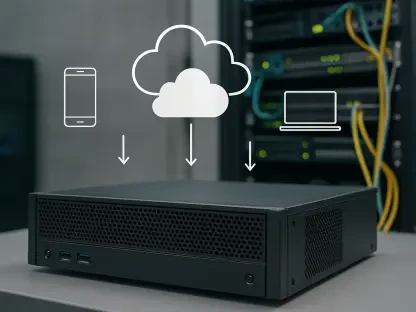I’m thrilled to sit down with Matilda Bailey, a renowned networking specialist with a deep focus on cutting-edge technologies like cellular, wireless, and next-gen solutions. With years of experience navigating the complex world of IT infrastructure, Matilda has a unique perspective on managing network traffic prioritization, aligning technical strategies with business goals, and tackling the political challenges that often arise in this space. In our conversation, we explore how to effectively communicate the importance of network priorities to non-technical stakeholders, strategies for engaging users and management, and the role of innovative tools and approaches in enhancing network performance. Let’s dive into this insightful discussion.
How would you break down the concept of network traffic prioritization for someone who’s not familiar with the technical side of things?
Network traffic prioritization is essentially deciding which data gets to move faster across a network when things get busy. Think of it like a highway: if there’s a lot of traffic, you might create a fast lane for emergency vehicles. In a business context, it means ensuring critical tasks—like a doctor’s telehealth call with a patient—get the bandwidth they need over less urgent stuff, like internal emails. It’s all about making sure the most important operations aren’t slowed down when the network is under pressure.
Why do you think it’s crucial for businesses to prioritize certain types of network traffic over others?
It’s crucial because not all data is equal in terms of business impact. For instance, if a company relies on real-time customer interactions, like video calls or online transactions, any delay can hurt customer satisfaction or revenue. Prioritizing that traffic ensures the business runs smoothly where it matters most. On the flip side, if less critical tasks—like routine file backups—slow down a bit, it’s not going to derail operations. It’s about aligning the network with the company’s core goals and keeping the mission-critical stuff running without hiccups.
When explaining the impact of prioritization to senior management who aren’t tech-savvy, what approach do you find works best?
I focus on translating tech into business outcomes. Instead of diving into jargon like bandwidth or latency, I tie it to something they care about—like productivity or customer experience. For example, I might say, “If we prioritize our telehealth platform, doctors can see patients without delays, which could increase appointment numbers by 20%.” Using relatable scenarios and numbers helps them see why it matters, and I always frame it around how it supports their strategic goals, not just the IT department’s needs.
How do you typically approach meetings with users to discuss and define network traffic priorities?
I start by setting the stage with clarity. I lay out the business priorities as defined by top management so everyone’s on the same page about what’s non-negotiable. Then, I encourage open dialogue—asking users about their day-to-day needs and pain points. It’s not just me dictating; it’s about finding a consensus. I also make sure to explain trade-offs, like why one department’s app might take a backseat to another’s critical system. Building that understanding upfront, even if it takes a few meetings, helps reduce friction later on.
What are some of the biggest challenges you’ve encountered when trying to get users to agree on prioritization decisions?
The biggest challenge is often the “my data is the most important” mindset. Every department thinks their work should be top priority, whether it’s sales needing fast CRM access or marketing wanting quick uploads for campaigns. I’ve had meetings where emotions ran high because users felt sidelined. The key is managing expectations and staying neutral—showing data on usage patterns or business impact to back up decisions. It’s tough, but fostering trust by being transparent about why certain choices are made usually helps smooth things over.
How do you ensure that the network priorities you set align with top management’s broader business objectives?
I make it a point to stay in close contact with leadership to understand their vision—whether it’s expanding customer reach or cutting costs. Then, I map network priorities directly to those goals. For instance, if the focus is on improving customer service through a new app, I’ll ensure that app gets the resources it needs, even if it means reallocating bandwidth from elsewhere. Regular check-ins with management also help me stay aligned and adjust as their priorities shift, keeping the network strategy tied to the bigger picture.
How often do you believe network traffic priorities should be revisited, and what drives that timing?
I think reviewing priorities annually is a good baseline, ideally during corporate strategy or budget planning sessions when the company’s direction is clearest. But if the business is in a fast-changing environment—like during a merger or a major product launch—reviews should happen more often, maybe quarterly. The driving factor is change: if business needs evolve, the network has to keep up. Sticking to outdated priorities can bottleneck operations, so staying proactive with reviews is essential.
Can you walk us through a time when business priorities shifted, and you had to adapt network traffic rules accordingly?
Absolutely. A few years back, I worked with a healthcare provider that suddenly scaled up its telehealth services due to a surge in demand. Overnight, video consultations became the top priority. We had to reallocate bandwidth from internal systems—like administrative file transfers—to ensure those calls had zero lag. It wasn’t popular with some internal teams at first, but we communicated the ‘why’ behind it, tying it to patient care outcomes. We also set specific hours for high QoS on telehealth, freeing up resources later for other tasks. It worked out well, and patient feedback improved significantly.
What steps do you take to continuously enhance network performance for users, despite resource constraints?
I focus on incremental improvements and leveraging what’s available. First, I analyze usage data to spot bottlenecks and optimize existing setups—sometimes just tweaking configurations can boost efficiency. I’ve also adopted newer technologies like Wi-Fi 6 where budget allows, as it handles more devices with better speed. But when resources are tight, it’s about smart prioritization and offloading non-critical traffic, like using content delivery networks for heavy web requests. The goal is to keep pushing the needle forward, even if it’s step by step, while balancing costs.
Looking ahead, what is your forecast for the future of network traffic prioritization with emerging technologies on the horizon?
I’m really excited about where this is headed. With technologies like private 5G and edge computing maturing, I think we’ll see more granular control over prioritization. Networks will become smarter, using AI to predict traffic spikes and adjust on the fly, reducing the need for manual reviews. We’re also likely to see more segmentation, where mini-networks tailored to specific needs—like a factory floor or a remote office—become standard. This will make prioritization less contentious because resources won’t be a zero-sum game. Overall, I believe the future is about automation and customization, making networks more responsive to business demands than ever before.









